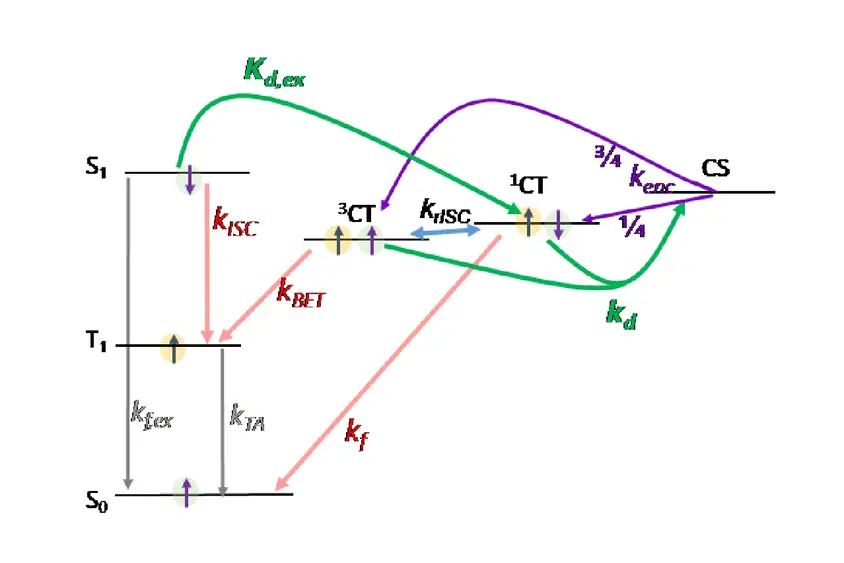Pushing the FF of Non-Fullerene Acceptors Based Solar Cells Above 80%: Relating Order to Reduced Recombination to Device Performance (Fabulous II)
23/10/2024 - 23/10/2027

The Fabulous II project aims to uncover the mechanisms behind reduced recombination processes and the influence of dark triplet states in achieving high-performance organic solar cells with non-fullerene acceptors (NFAs) that exhibit fill factors (FFs) exceeding 80%. However, the factors that determine why certain material combinations succeed while others fail remain unclear. Developing a general design rule to address this challenge will be a significant contribution of the project.
A key question is whether recombination losses and dissociation efficiency/charge generation arise from distinct charge transfer (CT) states, a possibility that has been largely overlooked. This hypothesis could explain the coexistence of a relatively high recombination rate and activationless charge generation. Addressing this issue is a crucial objective of the project.
To tackle these challenges, the project is structured into three work packages. These will systematically investigate: the role of triplet states, the population dynamics of singlet and triplet CT states, the density of states of free charge carriers, and finally, the impact of additives in achieving high FFs by integrating the findings. We will combine the results from a large collection of steady state and transient methods.
The project is funded by the Deutsche Forschungsgemeinschaft (DFG) under Grant No.